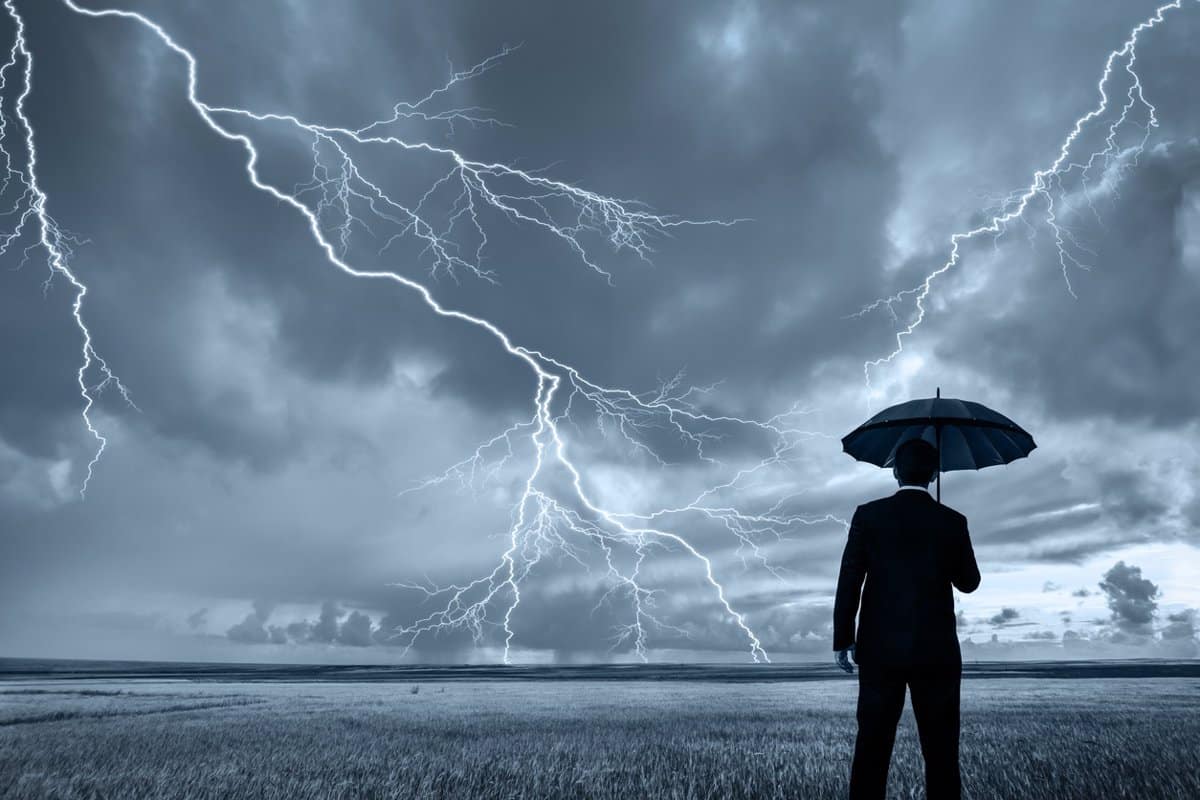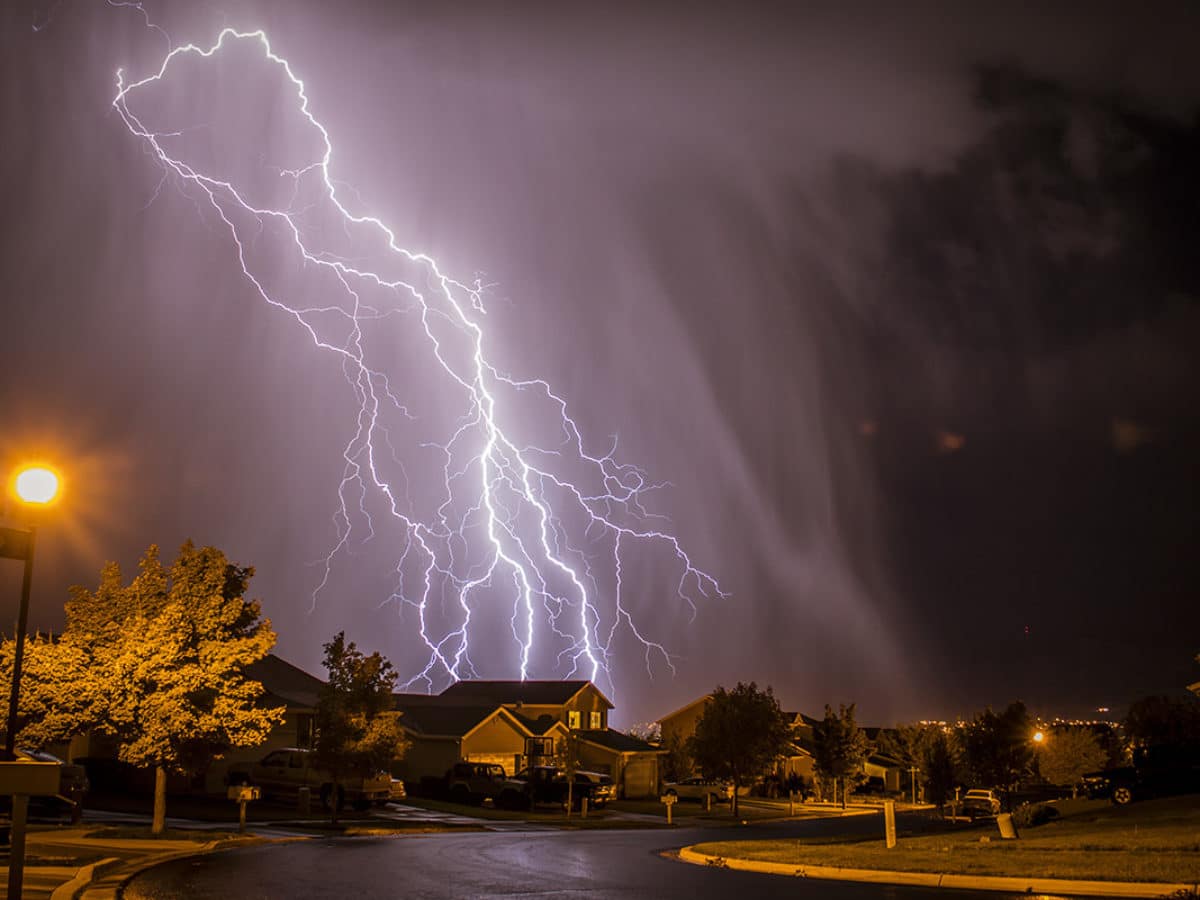
Electrical storms are a spectacle of nature that, just as it is impressive to see, can also affect infrastructure and people. The human being has always wondered how thunderstorms affect people and what consequences it can have on us. Not only at the level of damage from lightning strikes, but at the level of the nervous system, etc.
Therefore, we are going to dedicate this article to tell you how thunderstorms affect people and what consequences they have.
What are thunderstorms

A thunderstorm is a meteorological phenomenon characterized by atmospheric instability (manifested by heavy rain, strong winds, and occasionally hail or snow), and the production of lightning bolts, or lightning bolts, that produce thunder when the atmosphere crumples.
Like all storms thunderstorms move at high speed under the influence of atmospheric winds. However, its course can change due to eventual irregularities, such as upwind.
They can also initiate the rotational movement that forms supercells, or supercells, in which the internal circulation of air masses occurs, making them persistent (and dangerous) longer than usual.
How do storms form?
For them to form the atmosphere must exhibit a specific humidity profile in the warm upwind. The wind cools very high in the atmosphere, releasing energy and condensing, reaching temperatures below the dew point.
Thus, cumulus clouds are formed with great vertical development (up to 18.000 feet) feeding on a constant flow of hot air. These are storm clouds, to be precise.
The stronger the rising hot air, the more ferocious the storm. Its charge depends on the amount of water, ice or snow falling from a height. These precipitations release electricity due to the difference in charge between the upper and lower layers of the atmosphere.
How Thunderstorms Affect People

The health of some people is greatly affected by the weather. Although they may seem like grandma's tales, certain weather conditions do affect our health. While the most common is joint pain that arises with environmental changes, there are other health problems that can be related to the state of our bodies.
When strong winds blow, the body reacts as if it is under attack, with what is known as a "fight or flight" response, such as a racing heart and turbulent emotions.
In addition, windy conditions unleashed in a thunderstorm can trigger migraines. One reason is the effect on the hypothalamus, the region of the brain that controls bodily functions; it can cause constriction or inflammation of the blood vessels in the head, which can cause the pain associated with migraines.
On the other hand, bruised people don't enjoy thunderstorms either. When external pressure drops, it causes normal tissue to expand and contract. However, because scar tissue is not elastic, but rather dense and hard, cannot adapt to pressure changes, which causes a feeling of tightness that causes intense pain.
This may be due to baroreceptors in the joints that detect a drop in atmospheric pressure when the weather changes from dry to rainy. Fluid levels in the joints can fluctuate with these changes, which can trigger nerve pain.
strong electrical storms

The change in air pressure that precedes a thunderstorm often triggers a headache. When the pressure drops, the brain and nerve cells begin to interact differently, leading to headaches.
Many asthmatics also find that their condition worsens if thunderstorms occur when pollen counts are high. Gusts of wind that cause storms can absorb pollen. Meanwhile, the electrical charge generated by the storm can affect how long pollen stays in the lungs, potentially causing seizures.
According to the UK Institute of Psychiatry, warmer weather increases the risk of suicide. The scientists found that for every 1°C increase in average temperature above 18°C, the suicide rate increased by 3,8%.
However, psychiatrist Jan Wise said suicides often occurred when people were slightly drunk and were more likely to be in a hot climate, especially in the UK.
Storms of any type can cause significant damage to property and people, since rain can cause flooding and strong winds can bring down trees, power poles and other objects capable of injuring passers-by. If we add to that the frequency of lightning during storms, we also have to take into account the possibility of fires caused by electrical discharges.
Each bolt deals damage to the body of the creature struck by the bolt, whether it hits them directly or hits close, and is lethal due to its conductivity.
Stages of a thunderstorm
Thunderstorms have three phases:
- Birth. During this phase, hot air rises and creates a clone bus. If conditions are right, ice particles can form on top of clouds.
- Maturity. The vertical growth of the storm is maximum and the clouds take on the usual anvil shape. Inside the clouds intense and irregular turbulence occurs as a certain balance is achieved between windward and leeward, the first rays being produced by the heavier or denser particles that fall in rain and wind.
- Dissipation. As the cold snap prevails and excess energy is consumed, the clouds spread to the sides in layers and stripes. Eventually, cold air displaces warm air at the Earth's surface, and precipitation weakens as cirrus clouds cast their shadows to cool the Earth's crust.
The greatest danger with these storms is the presence of lightning or lightning. The second is particularly dangerous because they contain electromagnetic pulses capable of generating 1 gigawatt (one million watts) of instantaneous power. They travel through the plasma state at an average speed of 440 km/s.
This electricity is capable of electromagnetically damaging digital or electronic equipment, or knocking out humans or animals through direct or indirect contact.
I hope that with this information you can learn more about how thunderstorms affect people and their consequences.